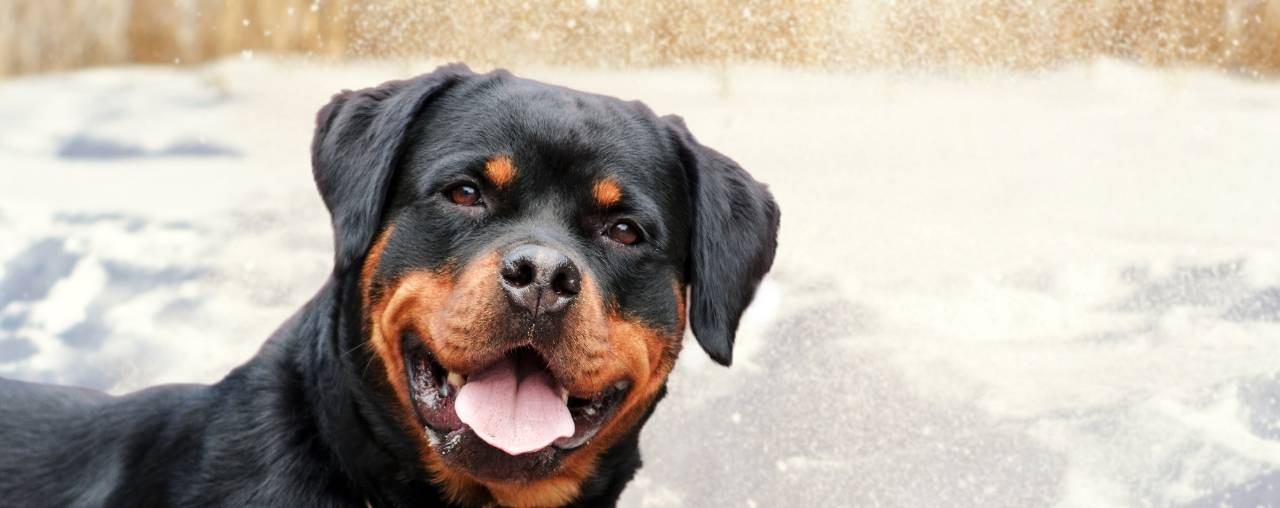Christmas Spotlight – The Siberian Husky
Welcome everyone to this special Christmas Eve edition of Val Talk’s Pets. Today we’ll take a look at The Siberian Husky. As many get ready for the festivities to come […]
 play_arrow
play_arrow“Human” Foods For Pets Val Cairney

 play_arrow
play_arrowSpotlight – The Rottweiler Val Cairney

Hello everyone and welcome to this spotlight edition of Val Talk’s Pets. In these spotlight episodes I like to highlight a breed of dog or cat and talk about their history, personality etc. I really enjoy looking at the different breeds of dogs and cats and looking at their special traits. So, on this episode I am going to talk about a breed that is close to my heart because I had one of these dogs and he was wonderful. So with some of my own experience thrown in let’s talk about the Rottweiler.
Many, many years ago, I shudder to think how many now, my sister was dating a fellow that worked for a security company that had a canine unit. He was in charge of two Rottweilers and a long haired German shepherd. One of the Rottweilers was his personal dog and the other two belonged to the security company, but as the handler he had the dogs on a regular basis. These dogs were amazing. I was so taken by how well they responded to commands and their incredible intelligence but also their ability to play and be super affectionate. This was the start of my love for Rottweilers. At that time, Rottie’s were not that well known outside of policing. Well I played with these dogs all the time and asked a ton of questions to their handler. Eventually I started to research on the breed and then I went to quite a few dog shows and spoke to the Rottweiler breeders and those showing Rottie’s. I learned a lot! Before I impart what I learned and my experience, let’s take a look at the Rottweiler and its history.

Rottweilers according to history are one of the oldest dog breeds. They descended from the mastiffs of the Roman legions. Rottweilers were mostly herders or driving dogs. As the Roman legions marched over the Alps the dogs protected the humans and drove the cattle. So, once they got to the “region of Rottweil [in Germany,] the dogs met and mixed naturally with the native dogs in a natural crossing”. We’ve seen this with some of our other older breeds like the Siberian Husky that I spotlighted. I’ll interject a bit here, when I had chosen the breeder to get my Rottie, she specifically spoke about the very stringent standards for breeding Rottweilers in Germany because the breed had almost died out at one point so to bring it back the German Rottweiler breeders were mandated to adhere to strict standards.
Rottie’s are considered to be a medium to large breed. Now I can see some eyebrows raising here because you’ve probably seen some very big Rottweilers. The huge Rottweilers are deemed American Rottweilers by enthusiasts and the smaller more athletic Rottie’s are German stock and this goes back to the standards. So for a point of reference, females are 35 to 48 kg or 77 pounds to 105 pounds. Height for a female is 56 to 63 centimeters or 22 inches to 24 inches at the shoulder. Males will weigh 50 to 60 kg or 110 pounds to 132 pounds and measure 61 to 69 cm or 24 inches to 27 inches at the shoulder. The lifespan of a Rottweiler is 8 – 10 years. Mine died at 9 and I’ve had people who have a Rottie that has made it to 11 or 12 years of age.
Back to some history, according to the Canadian Kennel Club, “the butchers in the town of Rottweil, Germany, developed the dogs to drive cattle [just like the Romans were doing] to market and to protect their money bags which were tied around the dog’s necks. It was an arduous task to drive the cattle and a strong dog with staying power, full of self will and physical strength was needed. In the beginning of the 20th century, these dogs were found particularly well suited as a police dog, a function they still fulfill, especially in Europe.”

Rottweilers have a distinctive look and one that has prevailed for the breed is the tail docking. Now, this practice has been done based on the history of the dog and working nature of the dog. As per their history they were often pulling carts or driving cattle and have since moved into police and security work. According to notabully.org, the Rottweiler tail was docked or cut off, “so that the tail (wouldn’t) be caught when pulling carts, grabbed when fighting off an assailant, or bitten or stepped on by livestock when herding.” In terms of tail docking, this is very controversial. Some breed clubs depending on the country are totally against changing the standards that have been set and see that only a docked Rottie can be shown. Other’s like the Rottweiler Club of Canada have been working diligently with the Canadian Kennel Club to have a full tail recognized in show. Well according to the CKC in the Group III Working Dogs Official Breed Standards, in terms of tails, it says, “If left in natural condition, tail is level in extension of the topline; at ease may be hanging.” Well there you go! Progress! If we are showing Rotti’s the question begs whether to keep the original historical view of the dog or move with the times as more and more breeds are reverting to the original aesthetic look of the breed. So, this would mean Dobermans would not have they ears cropped or their tails docked, Rottweilers would not have their tails docked etc. And it’s become quite a topic. To be honest I was really surprised to see a puppy Doberman fairly recently with its ears all bandaged having been cropped. It was such an unusual sight these days and I was surprised these puppy owners found a veterinarian to do the cropping, that’s how out of vogue this is becoming. So, tail or no tail, Rottie’s are traditionally black with tan markings. They have a tan bow tie mark across their chests and each paw is tan with the toe having a black stripe and they usually have a tan dot over each eye. Generally they are robust, powerful but compact and agile. A traditional size Rottie can be a great search and rescue dog because of its strength, endurance and agility. Their facial expressions usually show a fearless and self-assured look. Rottweilers are very protective of their family and property, but it is made very clear from standards and breed clubs that unnatural aggression is not part of the breed as they should present a calm and confident demeanour.

In terms of some of the things that may be a turn off in a Rottweiler is they do like to sit on your feet and a real Rottie trait is they lean on your legs. They also do have a big head with floppy gums so drooling can be an issue. They also tend to be a bit gas-y so that we know can be really disconcerting and they can be very rowdy so you have to be on top of exercise and training. Some of the health issues with Rottweilers include epilepsy, allergies, chronic diarrhea and a fairly high rate of cancer. They can also be prone to hip dysplasia and eye issues. In terms of the pro’s for Rottie’s they make great family dogs and they definitely give a very real sense of protection for a family, a person or household. They are very intelligent, so I found training was a breeze. They are easy to groom and can get along quite well with a family cat and other dogs as long as this is introduced well and with care. I’ll tell you about my experience with that in a minute. It is also recommended to keep a Rottie exercised mentally as well, so a treat puzzles is a good idea and going a little further with advanced obedience classes, agility or even Schutzhund classes. Schutzhund is a dog sport that combines protection, obedience and tracking.
Rotties are wonderful dogs but there are some rules to follow. First, I would say, this is not the best breed for a beginner dog owner. Rotties can push the envelope testing their owners to see what they can get away with and an experienced dog owner can easily set the boundaries needed so that this behaviour doesn’t begin to overtake. I see new dog owners all the time, and one of the things I see frequently is the owner talking to their pup or new dog as if they are a human child. Now, we all talk to our pets as family and say hello and goodbye to them and ask them what they are up to etc. but when it comes to training there has to be a line. Here is an example from a recent experience. The new owner had a lovely mixed breed dog and the dog was excited which was natural, and so the owner was trying to control the situation the way they thought best. This entailed, “Sparky! (not the dog’s real name) stop that, stop that please, we don’t act this way, show me sit, thank you!’ I can tell you, if you talked to a Rottweiler like that, I can pretty much guarantee he just figured out your weakness. Okay, so, not the best breed for a new pet parent. Secondly, breeding, breeding, breeding. A badly bred Rottweiler is a very dangerous animal. Breeders, bloodlines certificates all have to be fully researched to make sure you are getting a puppy with good bloodlines, no overbreeding, temperament and health like guarantees for hips and eyes. Once you get a puppy, the socialization is vital. My breeder told me that Rottie’s will often act aggressively to anything they do not understand. Now, that may not be a common piece of advice from Rottweiler breeders, but it did impress upon me how important it was to introduce my pup to everything I possibly could. This meant that taking him to the park to meet children was important and also sights and sounds, anything that you can think of to introduce a puppy to, is going to go a long way towards having a well socialized adult Rottweiler.

So, when I found my breeder, I was asked to visit her place to look at the pups but also because she was basically interviewing and sizing me up. I totally agree with this. Her dogs were top quality. The mother came from Germany for the breeding and she owned the sire. The sire and the dame and their parents and their parents were all Schutzhund champions. The breeder did not want any of her pups going to anyone who thought, hey how cool to have a badass Rottweiler?! I picked the puppy and then had to wait until he was 9 weeks before I could take him home. After that, I returned once the pup was 12 weeks to begin some very basic Schutzhund training. The training at this point was more for me so I could learn the philosophy behind it and understand that with this type of training you are creating a thinking dog which is right up a Rottweiler’s ally. So many things made sense. There was a fella at the training with an adult dog and his issue was that he felt the dog was not cautious enough with strangers coming to the door. When the trainer probed a bit more with regards to the issue, it turns out the issue was with the dog greeting the pizza delivery guy as if he was a long lost pal and when asked if the dog was given pizza, the penny just dropped with a thud! Yup, Rottweilers are smart!
So, how did everything go with my Rottie? Very well. He loved to play, especially with the hose and he loved his kiddie pool. He loved his cat companion and I really think that cat passed on not too long after the dog because he missed him so much. They were often seen snuggled together or having a conversation. He snuggled in bed and he was a great protector. He did bite a neighbour’s father out of the blue, the one and only time he had ever done that, but the neighbour was quite intoxicated and was lurching over towards me across the lawn and well, my dog took that as aggression to me so despite never having ever shown aggression, it came out when he thought I was in danger. So, that does bring me to another caution which is to be aware of the by-laws in your area.
But, I loved that dog. His ashes sit on a shelf with a lovely card that I got from a friend when he passed. He died of a massive heart attack at the age of 9.
My experience owning a Rottweiler was one I cherish. They are amazing, intelligent dogs that can read you like a book.
If any Rottie owners would like to share their Rottweiler stories or photos please email me at Val@Valtalkspets.com, I’d love to hear from you because we can always learn so much through other’s experiences, because as I say, knowing is caring.

Tagged as: rottweiler, buying a rottweiler, rotties.
Hi everyone, and welcome to Val Talk’s Pets, the forum for pet parents and enthusiasts alike. So, I have been working in the pet industry now for almost 10 years and, on a daily basis, I handle a lot of issues and questions arising from pet parents. I am not a veterinarian but I do have certifications in Canine, Feline, Small Animal, Fish and Herptile and Avian Health and Nutrition from the University of California, Davis Extension, the Vet College.
Val Cairney December 24, 2021
Welcome everyone to this special Christmas Eve edition of Val Talk’s Pets. Today we’ll take a look at The Siberian Husky. As many get ready for the festivities to come […]
Val Cairney August 29, 2025
Val Cairney August 15, 2025
For the price of a coffee, or more if you are feeling generous, you can help keep this podcast going & growing. Please visit my ko-fi page to make a donation. Thanks!
all rights reserved - Val Talks Pets - 2024